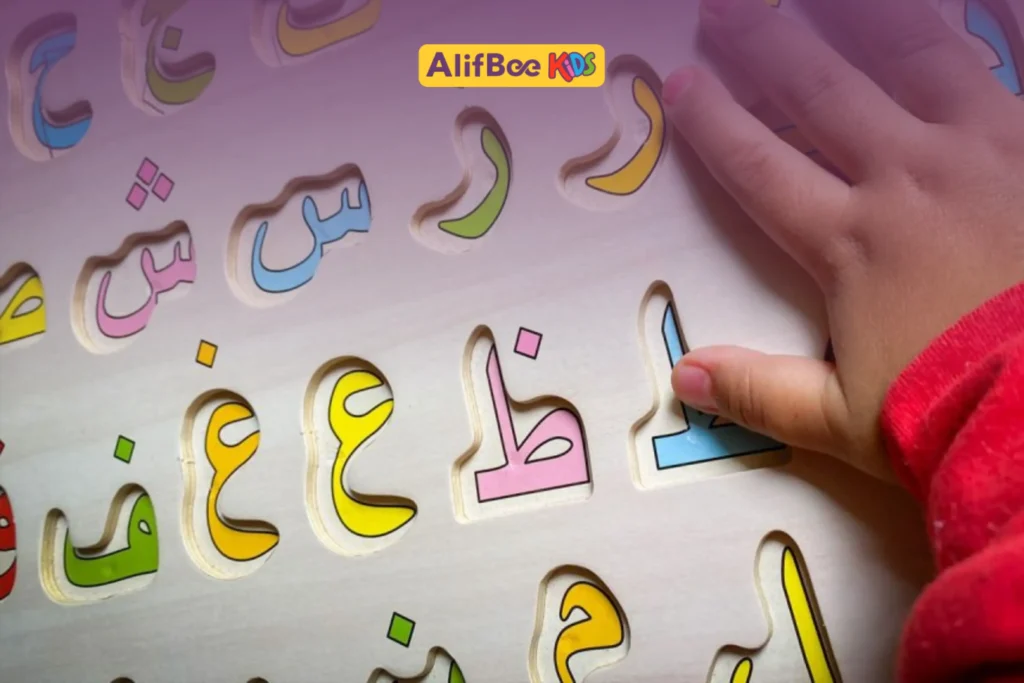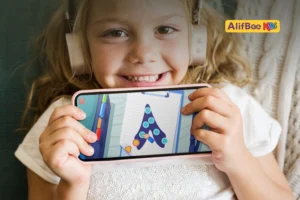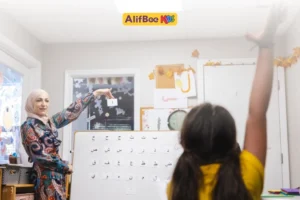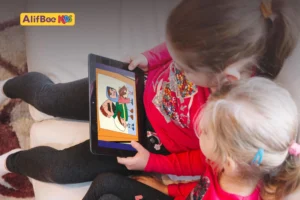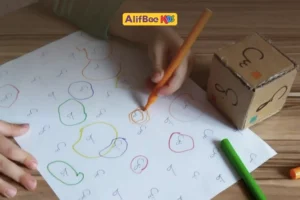Teaching your child the Arabic alphabet can be an excellent choice. For many parents, this may be their child’s first experience with a new language. Hence, making the learning process engaging and enjoyable is key when teaching the Arabic alphabet to kids. But a common question parents often ask is, “Where to begin?” This is it.
Our guide provides comprehensive details and methods that will help your child learn the 28 Arabic letters without any worries.
Why Teaching the Arabic Alphabet for Kids Matters
Learning a language always has its own benefits, and the same can be considered with Arabic. The following are some reasons why it is important to learn the Arabic alphabet for kids:
- It helps children to read and understand the Quran.
- It improves the memory and creativity of children at an early age.
- Arab natives believe that the Arabic language is a vital part of their culture and therefore encourage their children to learn it. It helps build cultural connections.
- Children feel more at ease when learning other languages in general, as they have already learnt Arabic.
Understanding the Basics of Arabic Letters for Kids
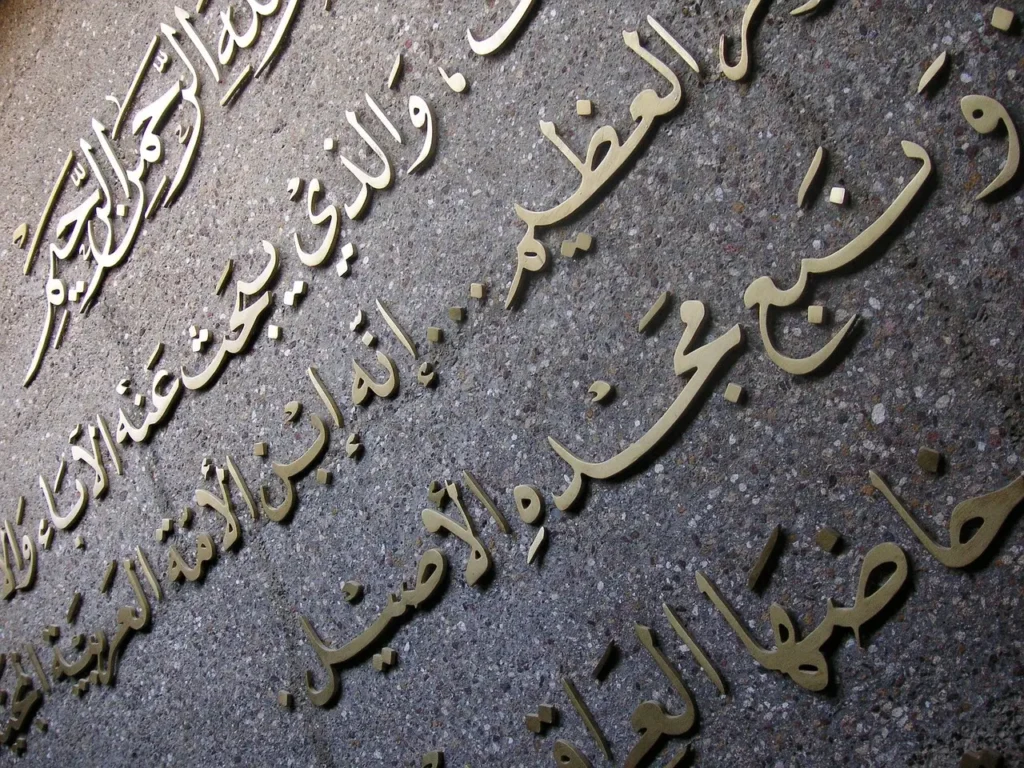
A few core concepts of the Arabic language must be discussed before proceeding further. The language consists of 28 letters, and it begins from the right side. Before teaching your children this language, make sure you are aware of these things as well.
Almost every Arabic word has a different shape, considering where it’s placed in the word. Although this may appear somewhat challenging for beginners, once you’re accustomed to the language, it feels rather straightforward. A letter has up to four main shapes. Let’s take examples of the letter “Baa”.
- Sole use: ب
- Used in the Beginning: بيت (house).
- Used in the Middle: حبيب (beloved).
- Used in the End: حب (love).
This shows how the letter ب changes its shape when placed at the beginning, middle, and end of the word. Moreover, the Arabic language consists of short vowels, often known as “harakāt”. These short vowels are represented by small marks above or below a letter. The three main short vowels are:
- Fatḥa: Short “a” sound. For example, بَ = ba
- Kasra: Short “i” sound. For example, بِ = bi
- Ḍammah: Short “u” sound. For example, بُ = bu
Since these are a bit tricky, you don’t have to teach your child all of it at once, especially at the beginning.
Step-by-Step Guide to Teaching the Arabic Alphabet to Kids
Step 1: Start with Recognizing the Arabic Letters
First, ensure your child is comfortable with the shape of the Arabic letters. Simply allow them to interact with Arabic letter forms. To keep things easy and simple, don’t start with writing or pronunciation right away.
- You can hang an alphabet poster of the Arabic language in your kid’s room. Introduce each letter by pointing, for instance, “This is Alif”.
- On websites like YouTube, there are several Arabic alphabet songs and poetry; use them for repetitive use.
- Anything that attracts your child, for instance, magnetic puzzles of Arabic letters. Give your child these so they can easily learn to identify the shapes of letters.
Step 2: Introduce the Sounds of Each Letter
Once the child can understand the shape of letters, teach them the sounds. For starters, begin with common letters like Alif, Baa, and Taa.
- Sounds First: Ensure your kid learns the sound of the letter, not only its name. For instance, when pointing out the letter Alif, take out the sound “a”.
- Repetition: Make sure to point out a certain letter and its sound multiple times.
· Distinguish Similar Letters: Your child may come across letters that seem or sound alike, such as Sīn (س) and Sād (ص). You need to teach the difference correctly, so your child can become used to the minor differences in pronunciation
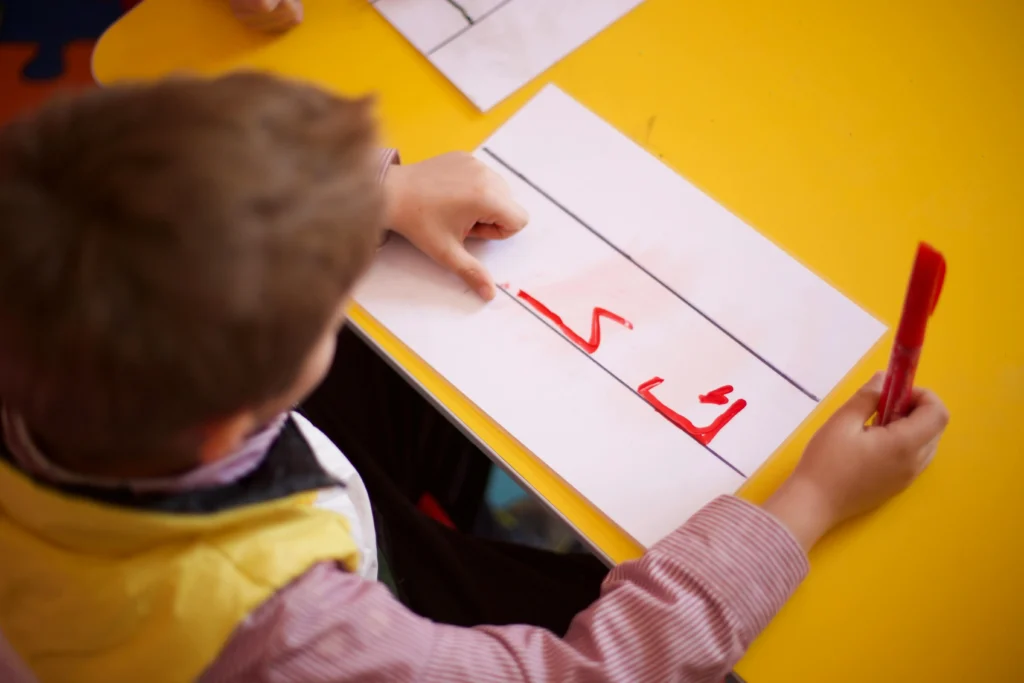
Step 3: Use Tracing and Writing Practice
Once the child can recognize letters and sounds and differentiate between similar letters, start teaching Arabic writing. This is important to improve their understanding and skill level of the language.
- Assist your kid in writing with trace sheets. For your child to trace with fingers or a pencil, print out big letters.
- For letters like Baa (ب), Taa (ت), and Thaa (ث), it is important to learn about their dots, since they distinguish these letters from each other. Have your child place the dots in the appropriate places after printing these letters without dots.
- To assist your child’s alphabet practice, head to apps like AlifBee Kids App, which offers free Alphabet worksheets to practice writing the Arabic letters that can be downloaded from the Parents Area. This application also provides a new learning experience through engaging games for your child. It even rewards the child for completing appropriate tasks, making learning enjoyable.
Step 4: Make Learning Interactive with Games
Let’s explore how parents can make learning the Arabic alphabet an exciting task.
- Purchase or create flashcards, and once you show them, ask your child to pronounce the name of the letter and its sound. You can also create a game of face-down flashcards to help your child locate matching pairs and test out their memory.
- Arabic alphabet puzzles are excellent for learning with magnets. Play it along with your child and help them assemble the puzzle pieces.
- Take a box and fill it with sand. Pronounce a letter and ask your kid to write it in the sand using their fingers.
- Always make sure to celebrate the learning experience of your child. Whether they master a new letter or finish a tracing exercise, acknowledge their achievements to motivate them.
Step 5: Encourage Reading Simple Words
Once you have passed this step and your child can understand and identify the sounds of each letter, introduce them with simple words.
- Two-Letter Words: Introduce two-letter words that are extremely easy to say and are generally used in daily conversations. Take a letter that your child already knows and pair it with another familiar one.
- Introduce Vowels: Introduce your child to the short vowels, also referred to as harakāt. Show your child how to read a word like باب (baab, door).
- Simple Vocabulary: Use just the words your kid uses every day, such as أم (umm, mother) or أب (ab, father), so they may incorporate them into their everyday life.
What Are The Best Tips for Parents Teaching Arabic Letters at Home?
Follow these straightforward tips to ensure you teach Arabic to your kids in an ideal way.
- Be Reliable: Allocate a small amount of time every day for education and learning. A short session of ten to fifteen minutes may be more advantageous than a long one. Your child’s brain gathers information more rapidly thanks to this regularity.
- Make Learning Fun: Never force your kids to learn, or it might distract them further from learning the language. Instead, when teaching Arabic letters to kids, ensure that your teaching method is fun and doesn’t bore the child.
- Don’t Rush: Keep in mind that every child has a different learning progress. Don’t compare your child to others in terms of the learning process, as it may de-motivate them. Instead, focus on their own path only.
- Mix It Up: Use flashcards on the first day, followed by a worksheet and an app like AlifBee the following day. By employing a diverse learning method, you can ensure your child’s high interest in learning the Arabic alphabet.
What Are the Common Mistakes to Avoid?
- Ignoring the Sounds: Sound forms the foundation of learning to read. Hence, it is wise to listen to the sound of the letter instead of just focusing on its name.
- Ignoring Vowels: Short vowels are crucial! To help your child grasp how they impact pronunciation, make sure you introduce and repeat them for every letter.
- Putting Too Much on the Child: Never teach too many letters at once. Focus on one or two until your child truly understands them. It’s way better to proceed slowly than to put too much pressure on your child.
- Not Teaching Various Shapes: Ignoring how letters can change shape is a common mistake. Later on, this may confuse the kid. After separating each letter, demonstrate how they relate to one another. To demonstrate the distinctions, print out a few examples.
What are the Best Resources for Learning the Arabic Alphabet?
- Interactive Apps: One outstanding example of a new, engaging tool that makes learning enjoyable is the AlifBee Kids App. It offers an organized path with games that focus on sound recognition, tracing, and expanding one’s vocabulary.
- Printable Worksheets: You can download some Arabic letter workbooks or find a wealth of free worksheet pages online. These are ideal for honing your writing abilities.
- Storybooks: Seek out straightforward Arabic storybooks with vibrant illustrations. Encourage your child to identify the letters by pointing them out.
- Flashcards: There’s a reason why flashcards have endured. Either purchase pre-made sets or create your own by adding the appropriate letters and a dot to each one.
Final Thoughts
Learning Arabic can play a vital role in the life of anyone. Parents aiming to teach their children the Arabic language must be mindful of a few key considerations. You need to be patient, as learning a language is a slow process. Stick to a strategy and try to make learning as enjoyable as possible. This can make learning a much easier process for kids.
You will see your child’s confidence rise as they progress and become more familiar with Arabic letters. Although it may be slow, every step moves them closer to fresh ideas, speech, and a new world interpretation.
Take the first step, start with the AlifBee Kids App. Make Arabic language learning fun and easy! Download the app to provide an engaging and immersive learning experience to your child.

